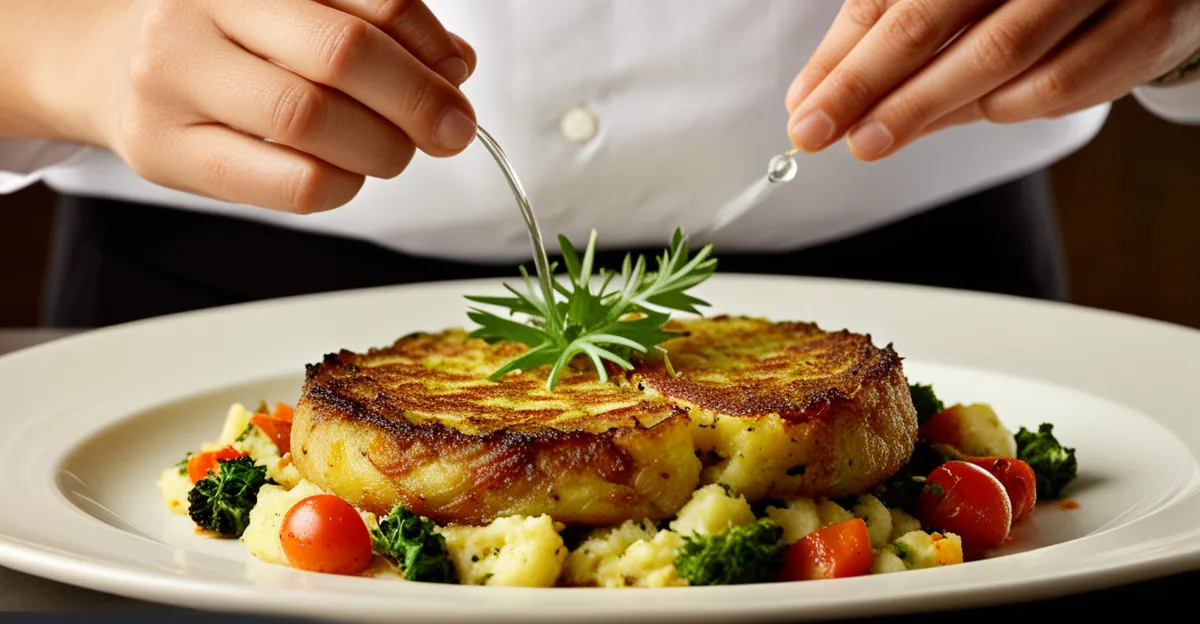Essential Ingredients for Bubble and Squeak
Mastering bubble and squeak ingredients begins with the right recipe basics. Traditionally, this dish highlights core vegetables like potatoes and cabbage, which provide the essential texture and flavor. These main components are usually leftovers, making bubble and squeak a perfect way to repurpose yesterday’s meals efficiently.
Leftover vegetables such as carrots, peas, sprouts, or even parsnips can be excellent additions, adding variety and extra nutrients. Including these optional add-in ingredients helps enhance both color and taste, making the dish more vibrant.
When fresh vegetables aren’t available, it’s important to focus on texture and moisture control. Substituting with frozen veggies is acceptable, but be sure to drain them thoroughly to prevent sogginess. If using fresh produce, select firm, crisp vegetables to retain a pleasant bite after frying. Remember, avoiding excess moisture is key to achieving the ideal crispness.
By considering these bubble and squeak ingredients and focusing on balance between leftovers and freshness, you set a strong foundation for a satisfying dish every time.
Step-by-Step Cooking Instructions
Mastering how to cook bubble and squeak starts with precise preparation steps to ensure a satisfying dish. Begin by chopping your chosen bubble and squeak ingredients, mainly the core vegetables like potatoes and cabbage, into uniform pieces. This guarantees even cooking. Next, gently mash the vegetables but avoid making a puree to retain some texture.
When it comes to the cooking technique, heat a non-stick frying pan or skillet over medium heat and add a small amount of oil or butter. Use a spatula to press the mixture into an even, flat layer. Cook for about 5 to 7 minutes without stirring to allow a golden crust to form. Flip carefully and repeat on the other side, achieving the signature crispy exterior.
Using kitchen tools like a sturdy spatula helps to flip the patties without breaking them. The balance here is crucial: too hot and the outside burns; too cool and the dish becomes soggy. By following these preparation steps and focusing on technique, you’ll cook bubble and squeak with a perfect contrast of crispness and tender insides every time.
Enhancing Flavor and Texture
To elevate bubble and squeak, precise flavor tips and seasoning advice are essential. Start by seasoning the mixture with salt and freshly ground black pepper to enhance the natural taste of the leftover vegetables. Adding a pinch of nutmeg or mustard powder can introduce subtle warmth and complexity. Fresh herbs like parsley or chives brighten the dish and complement the earthy flavors.
For texture improvement, incorporate finely chopped onions or leeks early in the cooking process—they add a slight sweetness and moisture balance, preventing dryness. Some cooks add a small amount of breadcrumbs or grated cheese to create a crispier crust during frying without sacrificing moisture inside.
Avoid common pitfalls such as under-seasoning or overloading the pan, which can cause sogginess rather than the signature crunch. Pressing the mixture firmly in the pan also helps bind ingredients and develop a golden, crisp exterior. Achieving the right texture balances a crispy shell with tender, flavorful insides—this is the hallmark of well-made bubble and squeak.
Variations and Health Considerations
Adapting bubble and squeak for health-conscious eaters involves thoughtful recipe variations that maintain flavor while boosting nutrition. To create a healthy bubble and squeak, swap traditional potatoes with sweet potatoes or cauliflower. These alternatives lower the glycemic index and increase fiber without compromising texture.
For those seeking dietary alternatives, such as gluten-free or dairy-free options, avoid adding breadcrumbs or cheese. Instead, incorporate flaxseed meal or ground nuts to bind ingredients naturally. Use olive oil or avocado oil for frying, which offer healthier unsaturated fats compared to butter.
Vegetarian versions thrive on leftover vegetables like kale, spinach, or roasted peppers, adding vibrant color and additional vitamins. For further fat reduction, try baking the mixture in a preheated oven on parchment paper rather than pan-frying. This also minimizes oil use and still achieves a satisfying crisp exterior.
Being aware of calories and macros is essential. A standard portion typically contains moderate carbohydrates and fats, but by choosing nutrient-dense vegetables and healthier fats, you can craft a balanced meal that appeals to diverse dietary needs while honoring traditional bubble and squeak ingredients.
Creative Serving Suggestions
Serving bubble and squeak offers versatile meal ideas that suit different occasions, from family dinners to casual brunches. Traditionally, it pairs beautifully with fried or poached eggs, creating a hearty and satisfying breakfast or brunch option. Adding a dollop of brown sauce or tangy ketchup complements the crisp texture and brings a familiar, comforting flavor.
For those seeking protein options, bubble and squeak works well alongside sausages, grilled bacon, or baked beans, enhancing a full English breakfast experience. Alternatively, serving it with a simple green salad or steamed vegetables transforms it into a lighter lunch or dinner.
Presentation can elevate the dish: shape the mixture into neat patties or use moulds for uniform portions. Garnish with fresh herbs like parsley to add a pop of color and freshness. Serving on warm plates preserves the crispness and invites diners to enjoy bubble and squeak at its best.
These serving bubble and squeak tips ensure your meal is both visually appealing and delicious, encouraging everyone to explore classic accompaniments while enjoying familiar, comforting flavors.









